Perhaps there’s something nurturing for Swainson’s Hawks about this particular power pole. Every summer for the past few years when I visit Montana there’s been a mated pair of Swainson’s Hawks that habitually perch on this same pole located a very short distance from the border of Idaho and Montana. And it’s obviously not the same pair of birds from year to year.
Swainson’s Hawks come in three different color morphs – light, intermediate and dark and birds of a mated pair can be of the same morph or a mixture of any of the three.
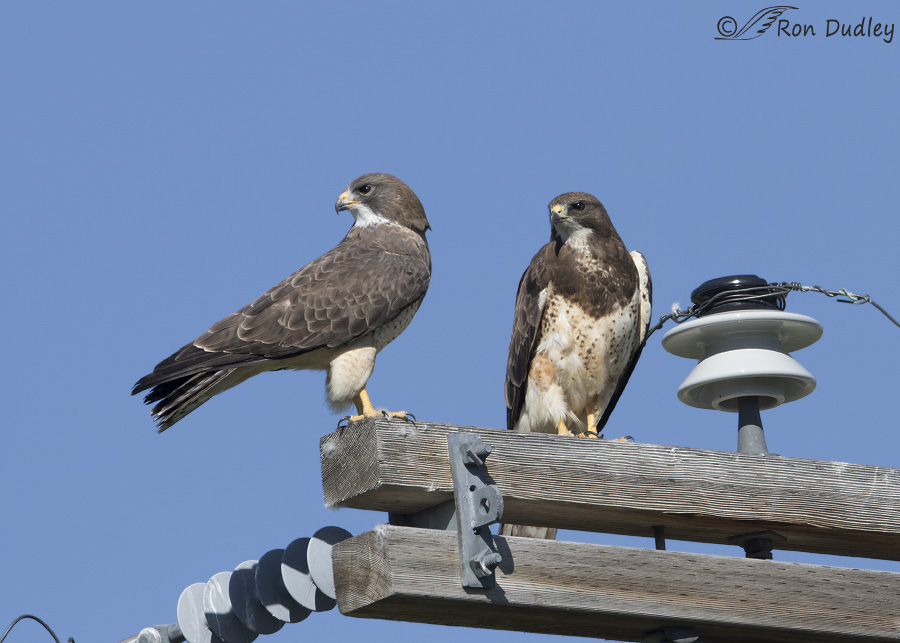
1/1000, f/6.3, ISO 500, Canon 7D Mark II, Canon EF 500mm f/4L IS II USM + 1.4 tc, not baited, set up or called in
On my recent camping trip to Montana about three weeks ago I found this bonded pair of Swainson’s Hawks habitually perching on the same old power pole I’ve been seeing the species on for several years now. Both birds are light morphs, the slightly larger female on the right. Within a couple of days of my arrival in the area she began to incubate eggs in their nearby nest.
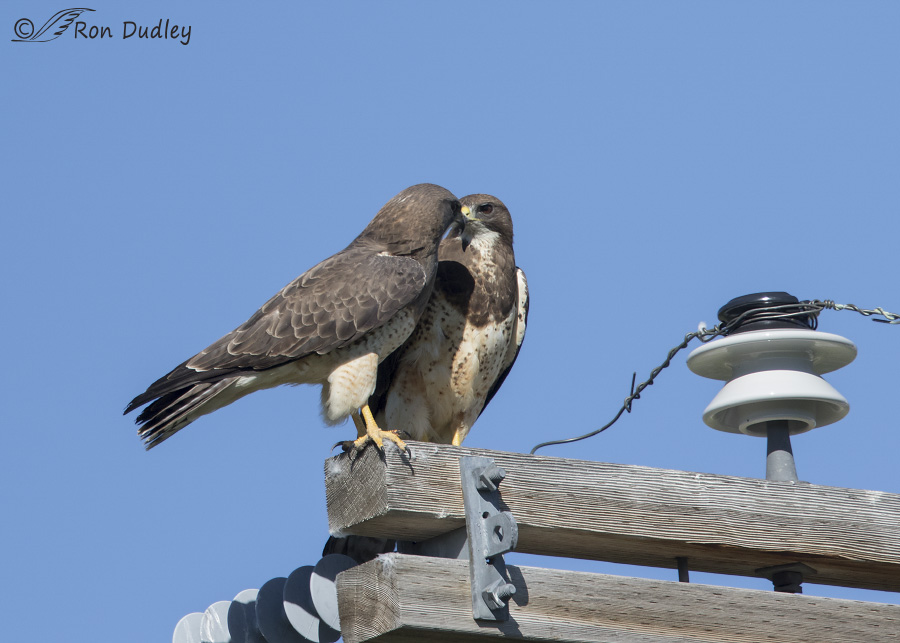
1/1600, f/6.3, ISO 500, Canon 7D Mark II, Canon EF 500mm f/4L IS II USM + 1.4 tc, not baited, set up or called in
But before that process began the birds sure liked to be close to each other, though I never did see them actually copulate.
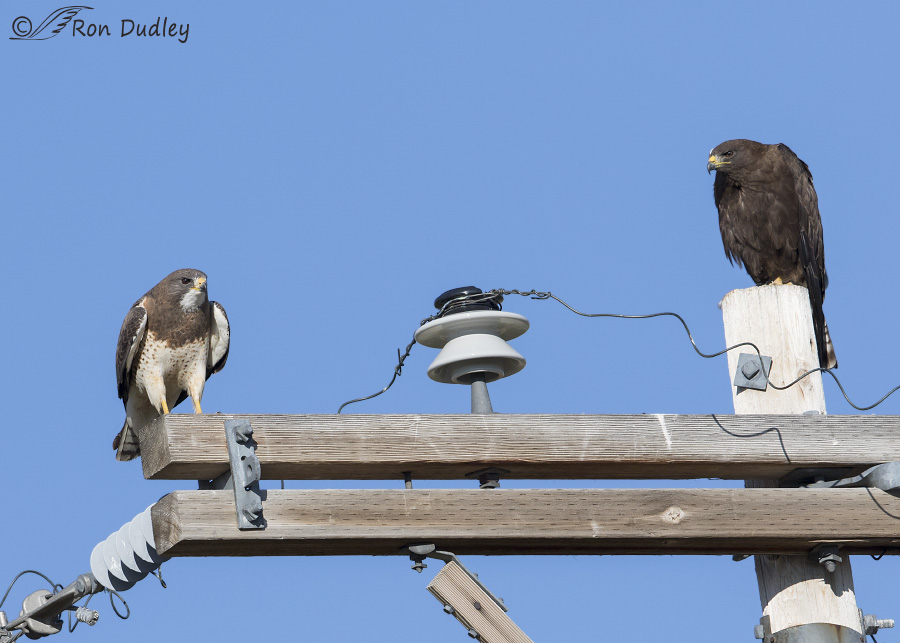 1/2000, f/7.1, ISO 400, Canon 7D Mark II, Canon EF 500mm f/4L IS II USM, not baited, set up or called in
1/2000, f/7.1, ISO 400, Canon 7D Mark II, Canon EF 500mm f/4L IS II USM, not baited, set up or called in
In stark contrast this is the bonded pair of Swainson’s Hawks that habitually perched on the same pole last year – this image was taken in July. The smaller male on the left is a light morph and the female is a dark morph. The color difference between them is striking enough to make the uninitiated wonder if they could even be the same species. Though the female may look a little grumpy and stand-offish here that really wasn’t the case. She has a stray white feather stuck to her forehead.
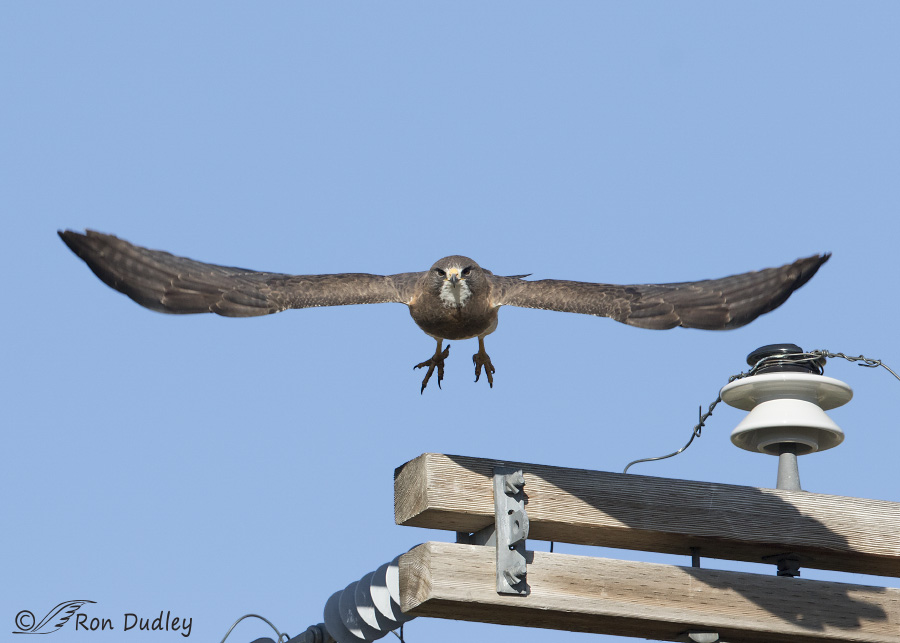
1/2000, f/7.1, ISO 400, Canon 7D Mark II, Canon EF 500mm f/4L IS II USM, not baited, set up or called in
Typically when one bird would fly off the other would soon follow. Here the male is taking off on a hunting foray…
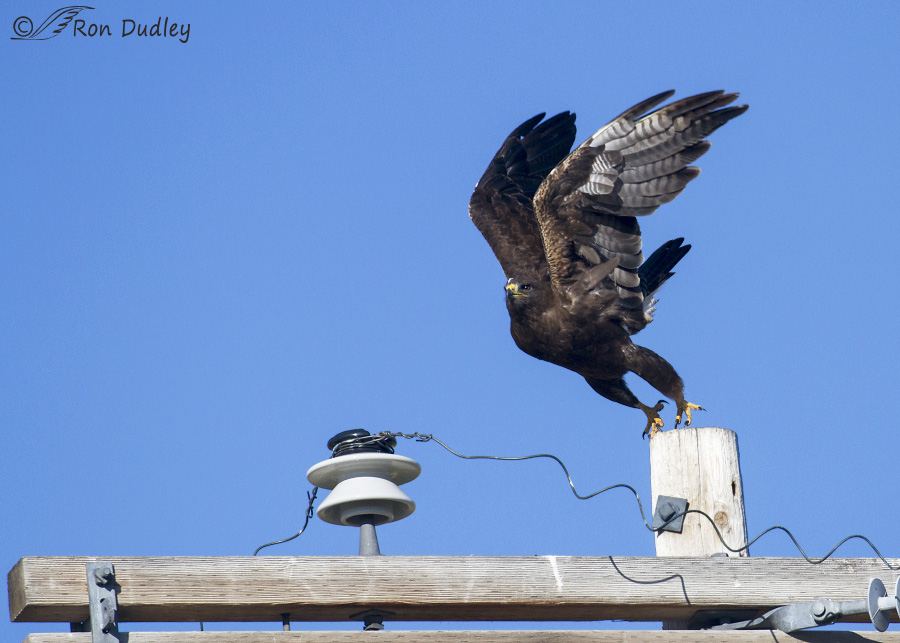 1/2500, f/6.3, ISO 400, Canon 7D Mark II, Canon EF 500mm f/4L IS II USM, not baited, set up or called in
1/2500, f/6.3, ISO 400, Canon 7D Mark II, Canon EF 500mm f/4L IS II USM, not baited, set up or called in
and the female soon followed.
I always enjoy seeing the different color morphs of Swainson’s Hawks and when they’re a mated pair and I see them together the contrast between color morphs really catches my eye. This year I’m watching a mated pair in northern Utah where the male is a light morph and the female is a juvenile light morph (juveniles look different from adults) – that’s a combination of mated birds I hadn’t seen before.
Ron


Oooooh.
And Wow. And a collection of other superlatives.
And rueful acknowledgement that birds are much less prejudiced and judgemental than we are.
Thank you, EC.
I really like the first pair of photos. It’s clear those two birds are bonded, and that’s something I’ve never gotten to see before.
I’m glad I could show it to you, Susan.
Very interesting and again, just WOW! I just love all the different color morphs with raptors, despite that they often create a major challenge to make a correct ID–think of all the available diversity with redtails, for example. You just gotta love the diversity. As for that pole, it obviously provides the best available vantage point from which to hunt with the best access to the nest. Again, here we are back in the mystery of it all and I’ve noticed they ain’t talkin’ 😉
I was asked recently about juveniles entering the breeding population. Of course, the answer is MOSTLY no, but we get back to that always and never thing coming into play. Yes, they CAN enter the breeding population before they’re full adults, just like human kids. Boys and girls do what boys and girls do, despite all the shoulds involved. It happens.
“juveniles entering the breeding population”
That’s one of the reasons I really took notice of that pair I mentioned, Laura – the female is still a juvenile but I photographed her and her mate copulating and she’s incubating now (though I saw both birds off the nest this morning).
I love the flying straight at you pose, the take pff fling and geather detail in the last, but all are wonderful….
This should be proof enough that this deranged evil thing hates me! I swear it makes these embarrassing typos just as I hit “send”…one of my daughters says hers does the same thing…
Thanks, Patty. Did you pay extra for the endearing “personality” of your iPad?
It was a gift from our kids…they obviously hate me , too….
Do you REALLY think that two critters that don’t look EXACTLY the same can actually get along…and even care for each other!!!??? That’s pretty extreme…..
😇
Pretty extreme, indeed – at least it is when many humans are involved.
Beautiful Ron, very nice shots and love you showing the two morphs.
I find it interesting and sad that we (humans) have lost the lessons learned by watching wildlife in general and species in particular.
We could learn from them, couldn’t we, Dick.
Beautiful shots and commentary, Ron. Particularly like the last shot. 🙂 Different pairs of great horned owls will use the same perches/nests here.
Judy, I’m somewhat surprised that I never see red-tails on this pole and that Swainson’s only use this one and not others nearby.
Amazing shots Ron and very interesting. Use there a life lesson here for humans?
Charlotte
If humans could only be so “tolerant”, Charlotte. I’m not going to hold my breath…